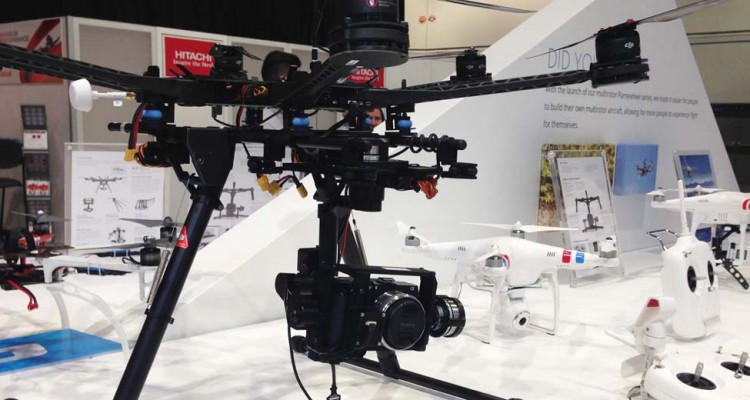In recent months, the Federal Aviation Administration approved operator exemptions for a small number of aerial production companies.
Safety is the critical issue if Hollywood is to make drones a part of film and TV production, asserted Pictorvision president Tom Hallman, speaking Thursday at the Hollywood Professional Alliance (the rebranded Hollywood Post Alliance) Technology Retreat in Palm Springs.
In recent months, the Federal Aviation Administration approved operator exemptions for a small number of aerial production companies, including Pictorvision, to use small, unmanned aircraft systems, or drones, for filming in U.S. airspace. “This is a test and something they could pull from us at any time,” Hallman said, adding that these exemptions essentially get the effort underway while the FAA works on regulations (and a notice of proposed rulemaking is said to be imminent). “We’ll file reports every month as they create the final rules. But everything is related to safety.”
Hallman added that while drones work, there’s a lot of opportunity for further development. “Lighter weight, that’s the key,” he said. “For every pound we add, the less time we can fly. Better batteries is probably going to be the next breakthrough.” On average, drones flight times currently range between 7-15 minutes, he reported.
Retreat attendees examined the potential of the Academy Color Encoding Specification, a development that was led by the Academy of Motion Picture Arts and Sciences’ Science and Technology Council.
ACES is a framework for managing color throughout the “life cycle” of a film or TV production, from production through archiving and future uses — effectively a digital replacement for the way color was managed on film.
The effort already has quite a history. Architecture development began in 2004, field trials started in 2011, and the first SMPTE (Society of Motion Picture and Television Engineers) standards surrounding ACES were completed in 2013. Along the way, it’s already been used on productions including Elysium, 101 Dalmatians, The Lego Movie and A Million Ways To Die in the West.
A developer kit became available in late 2014 and now version 1.0 is finalized. The Academy is beginning an effort to educate the global production community about how it can be used and get it into wider use.
Education partners that will help with training include the American Society of Cinematographers, International Cinematographers Guild and Visual Effects Society. Additionally, educational programs will take place at events including the upcoming NAB Show, and meanwhile users are setting up a community-led help desk.


Leave a Reply